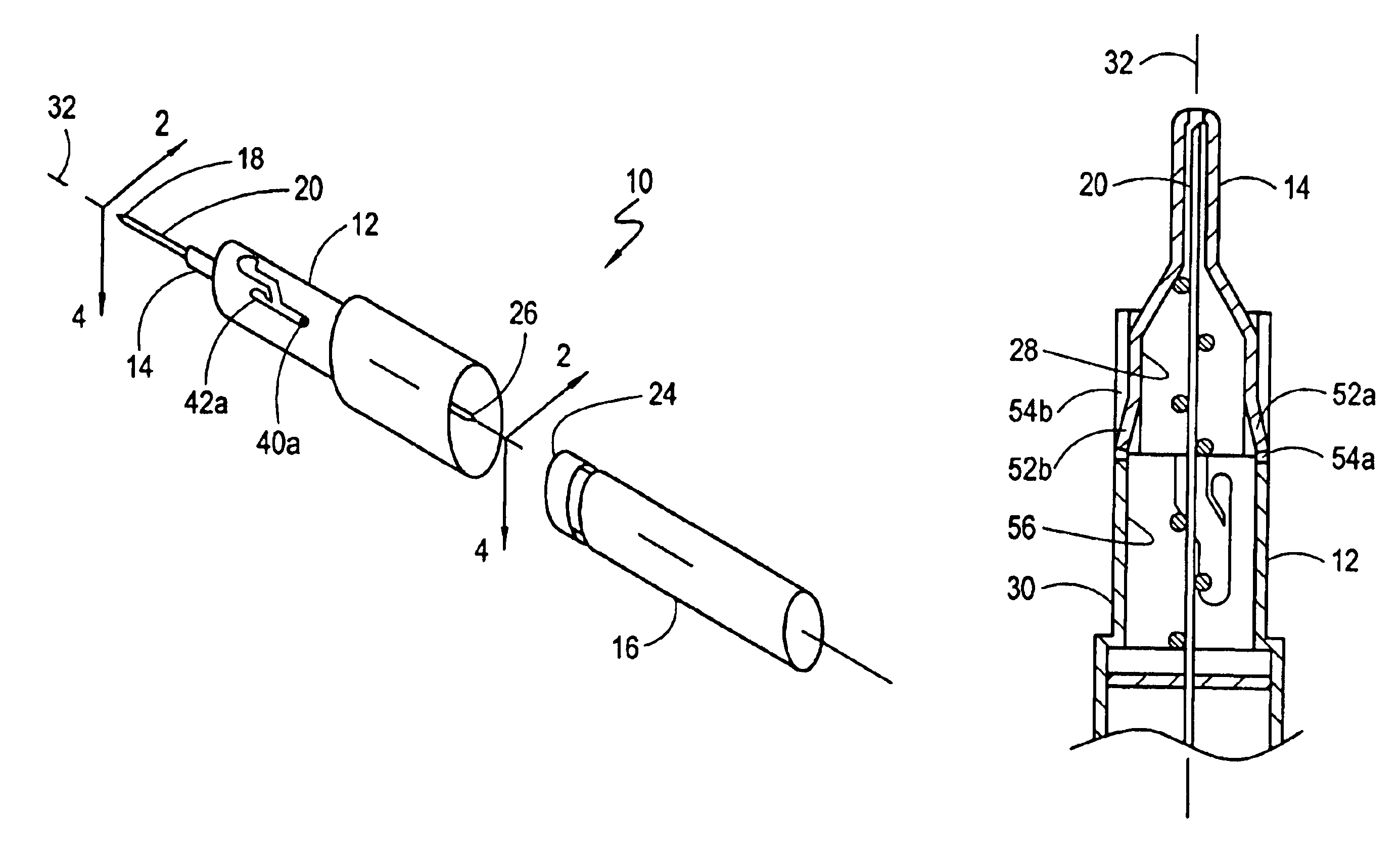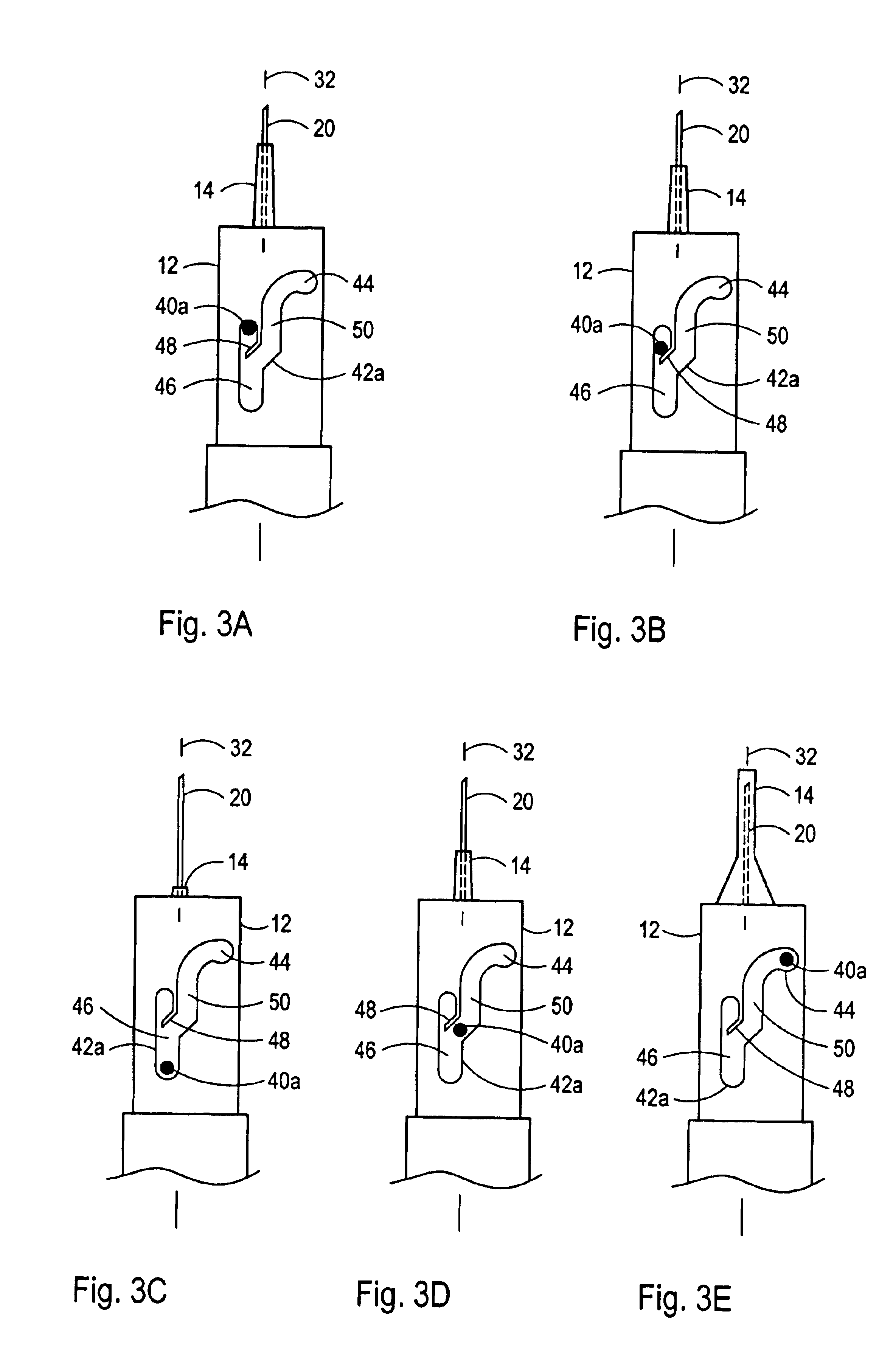Position guide for a needle guard
a technology of positioning guide and needle guard, which is applied in the field of syringes, can solve the problems of unprotected needles left unattended or improperly disposed of, potential to expose a health care worker to a life-threatening virus, and the cost of testing, lab work, and the loss of workers' time, etc., and achieves the effect of reducing the risk of infection
- Summary
- Abstract
- Description
- Claims
- Application Information
AI Technical Summary
Benefits of technology
Problems solved by technology
Method used
Image
Examples
Embodiment Construction
[0025]Referring initially to FIG. 1, a blood collection system is shown and generally designated 10. As shown, the system 10 includes a base member 12 and a needle guard 14. Functionally, the system 10 can be used to safely draw blood from a patient and into the blood collection vial 16. Specifically, the distal tip 18 of the hollow needle 20 can be used to pierce a patient's vein causing blood to flow into the hollow needle 20. As further shown, a septum 24 can be placed over the opening of the blood collection vial 16 allowing the septum 24 to be pierced by the proximal tip 26 of the needle 20 to establish fluid communication between the blood collection vial 16 and the needle 20.
[0026]In functional overview, the interaction between the base member 12 and the needle guard 14 causes the needle guard 14 to retract over the needle 20 during insertion of the needle 20 into a patient. After the needle 20 has been withdrawn from the patient, the needle guard 14 passively re-covers and i...
PUM
 Login to View More
Login to View More Abstract
Description
Claims
Application Information
 Login to View More
Login to View More - R&D
- Intellectual Property
- Life Sciences
- Materials
- Tech Scout
- Unparalleled Data Quality
- Higher Quality Content
- 60% Fewer Hallucinations
Browse by: Latest US Patents, China's latest patents, Technical Efficacy Thesaurus, Application Domain, Technology Topic, Popular Technical Reports.
© 2025 PatSnap. All rights reserved.Legal|Privacy policy|Modern Slavery Act Transparency Statement|Sitemap|About US| Contact US: help@patsnap.com



